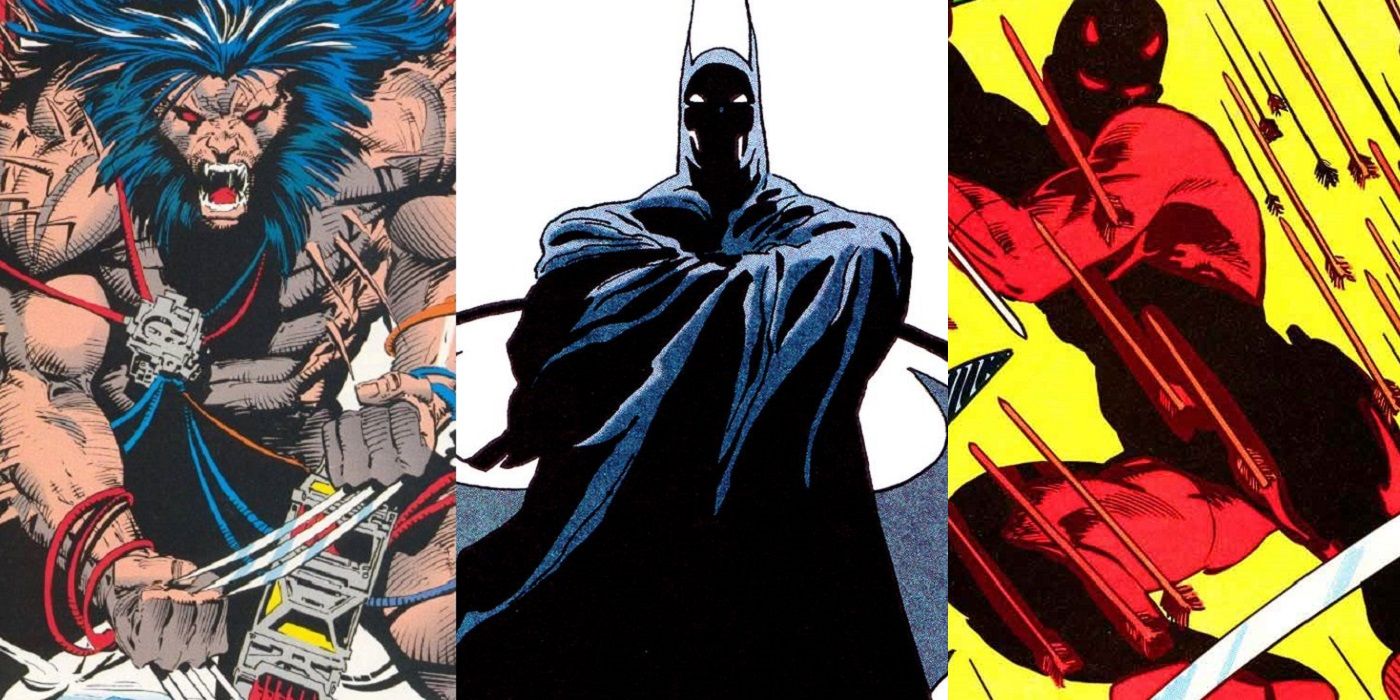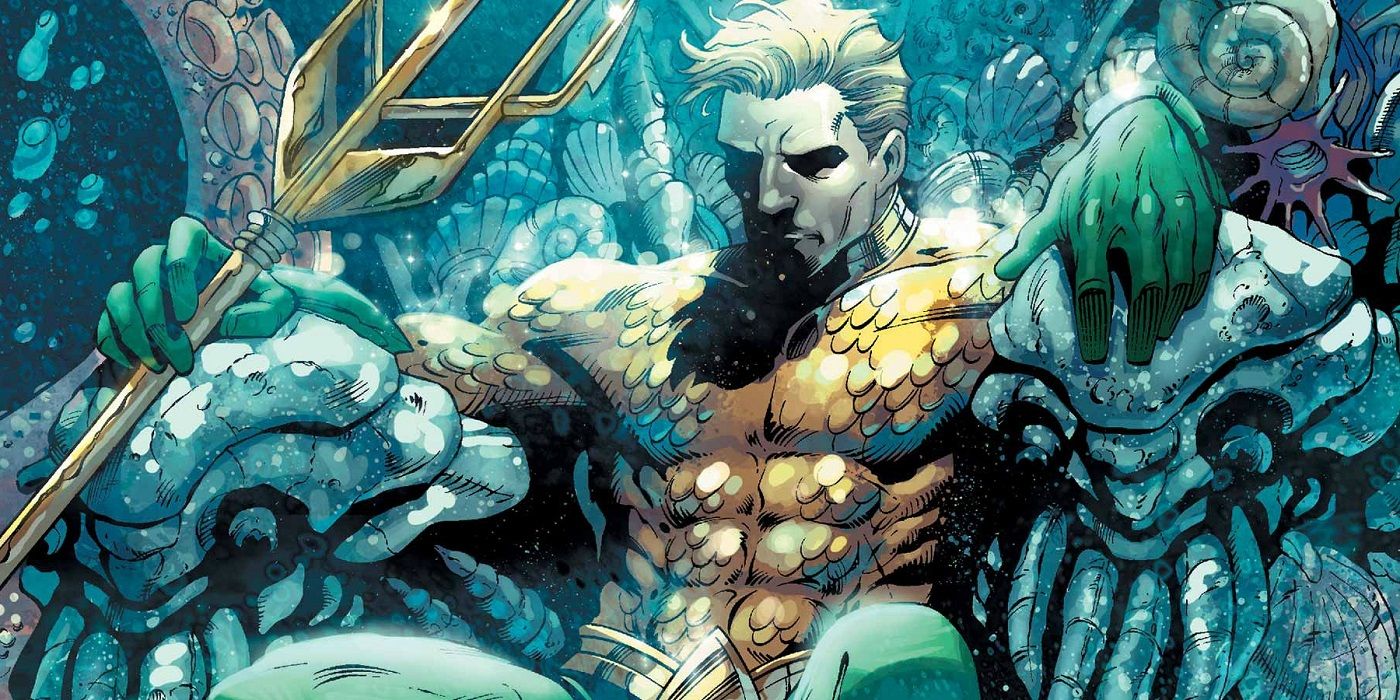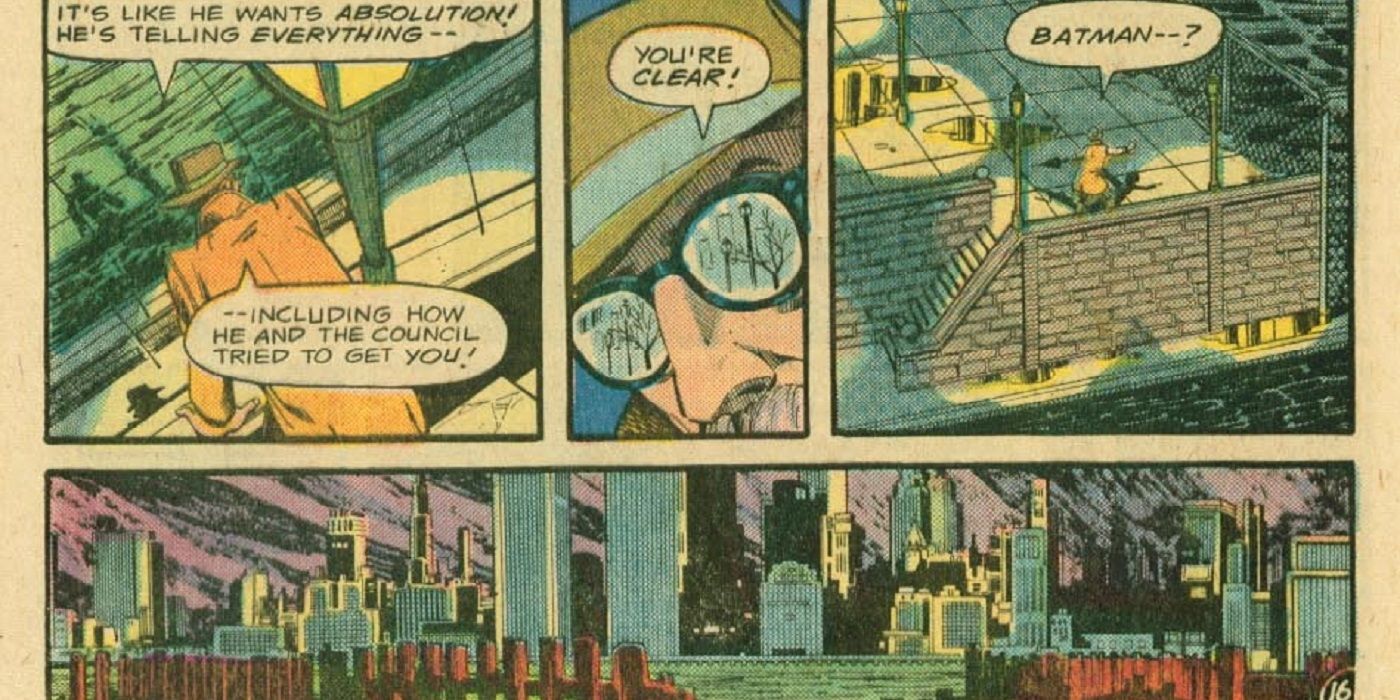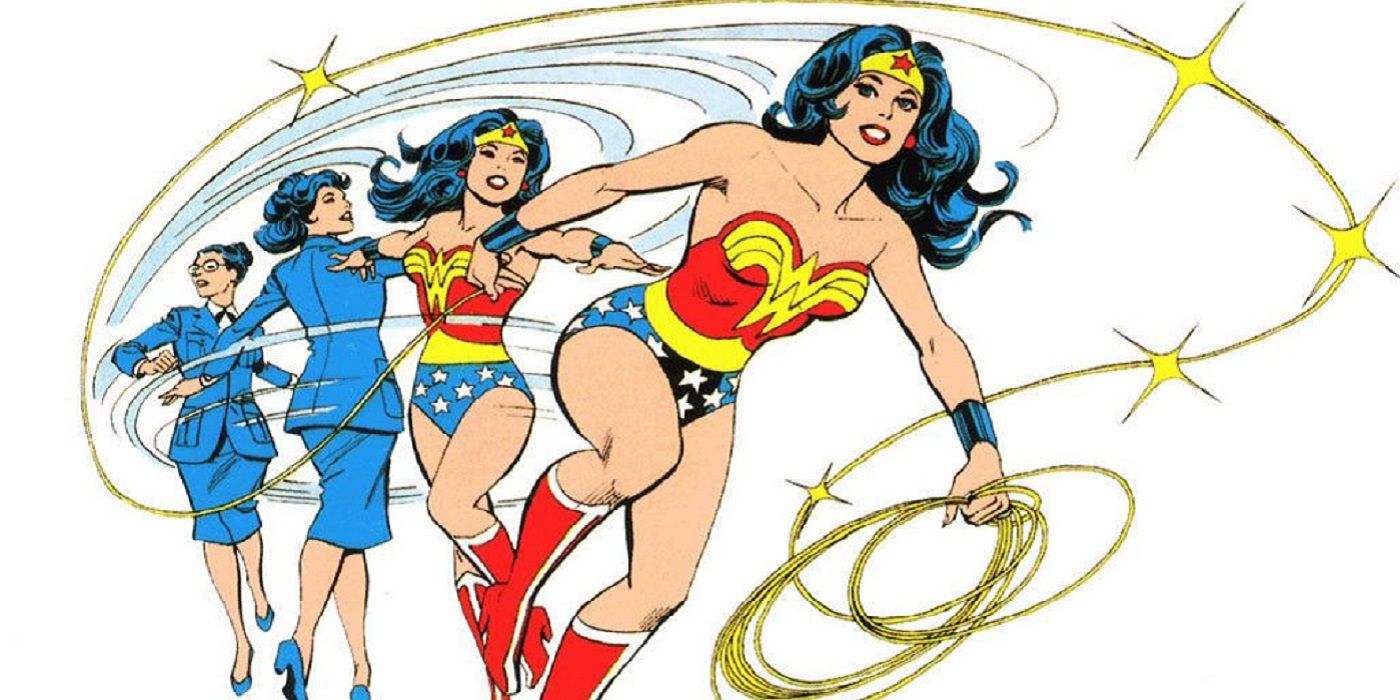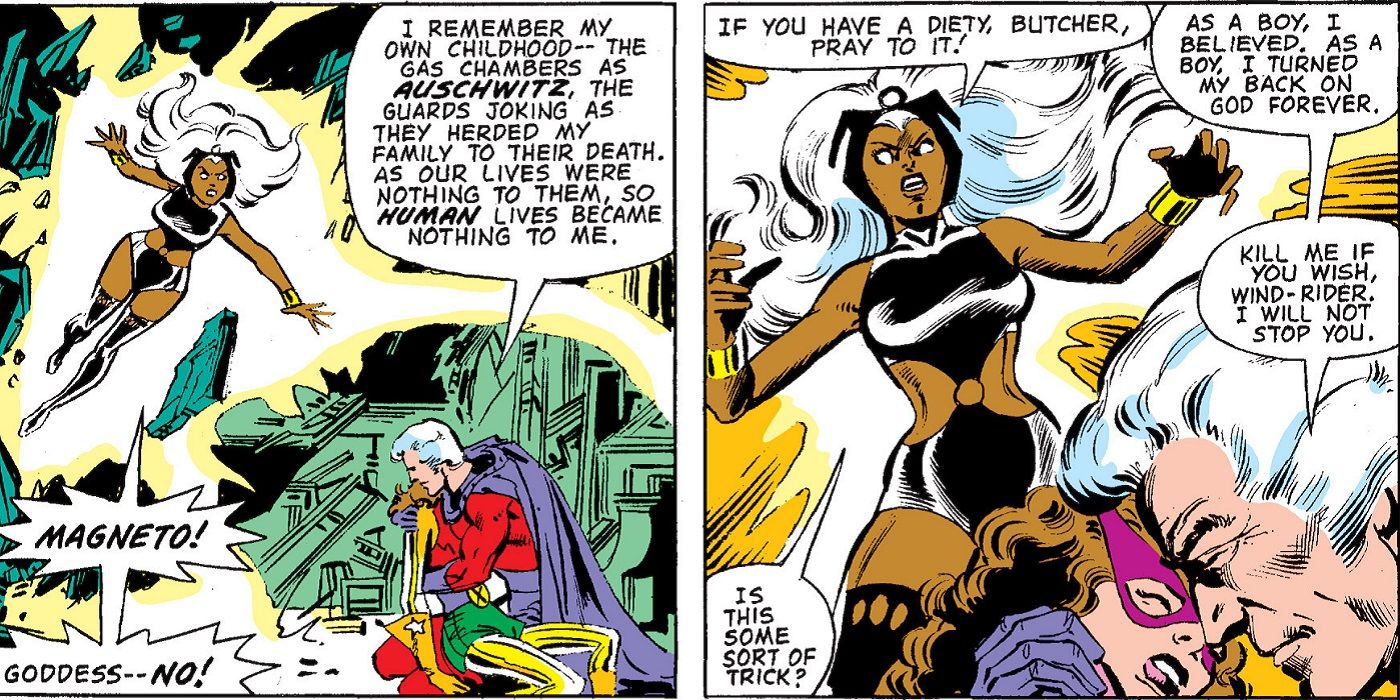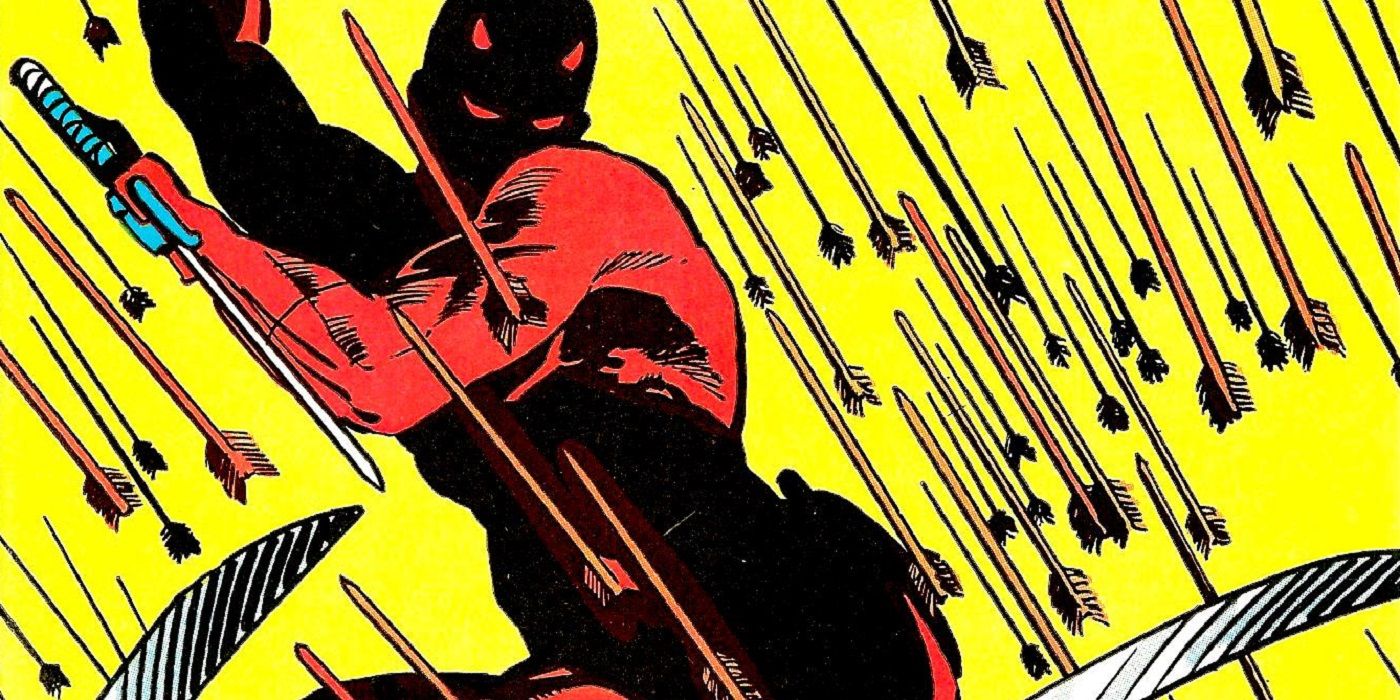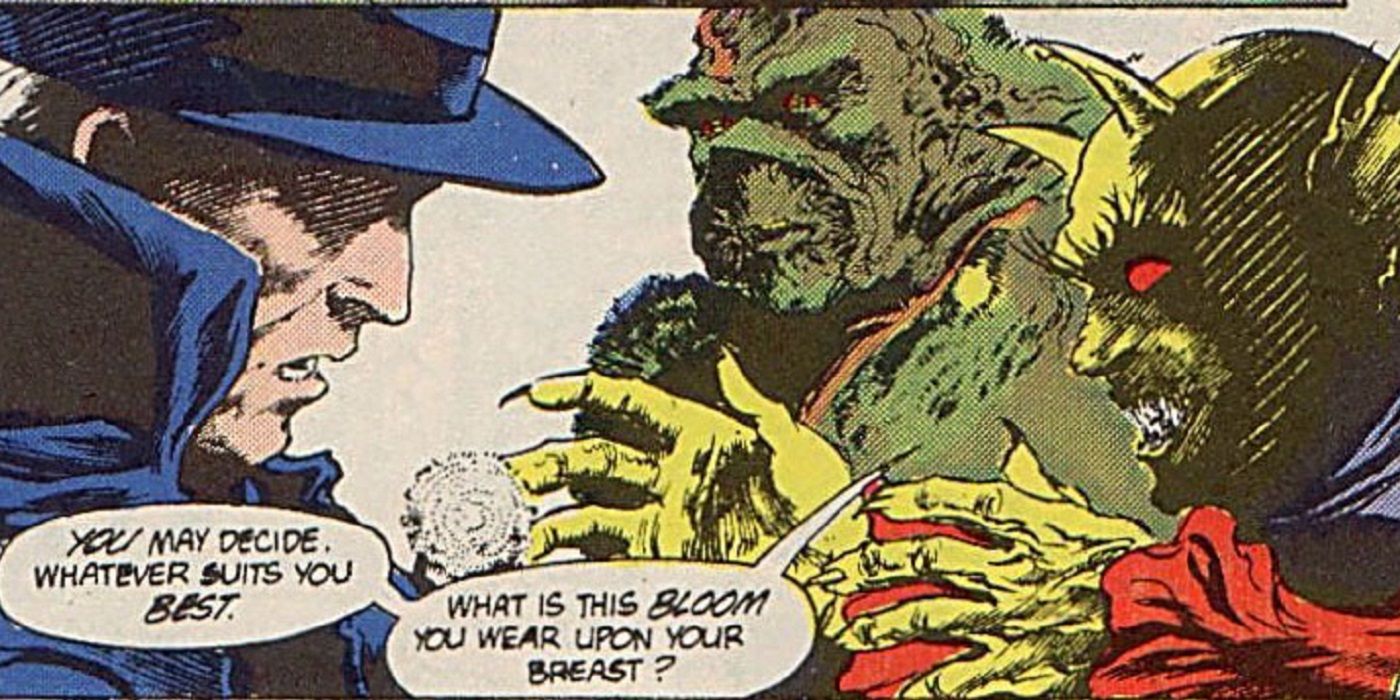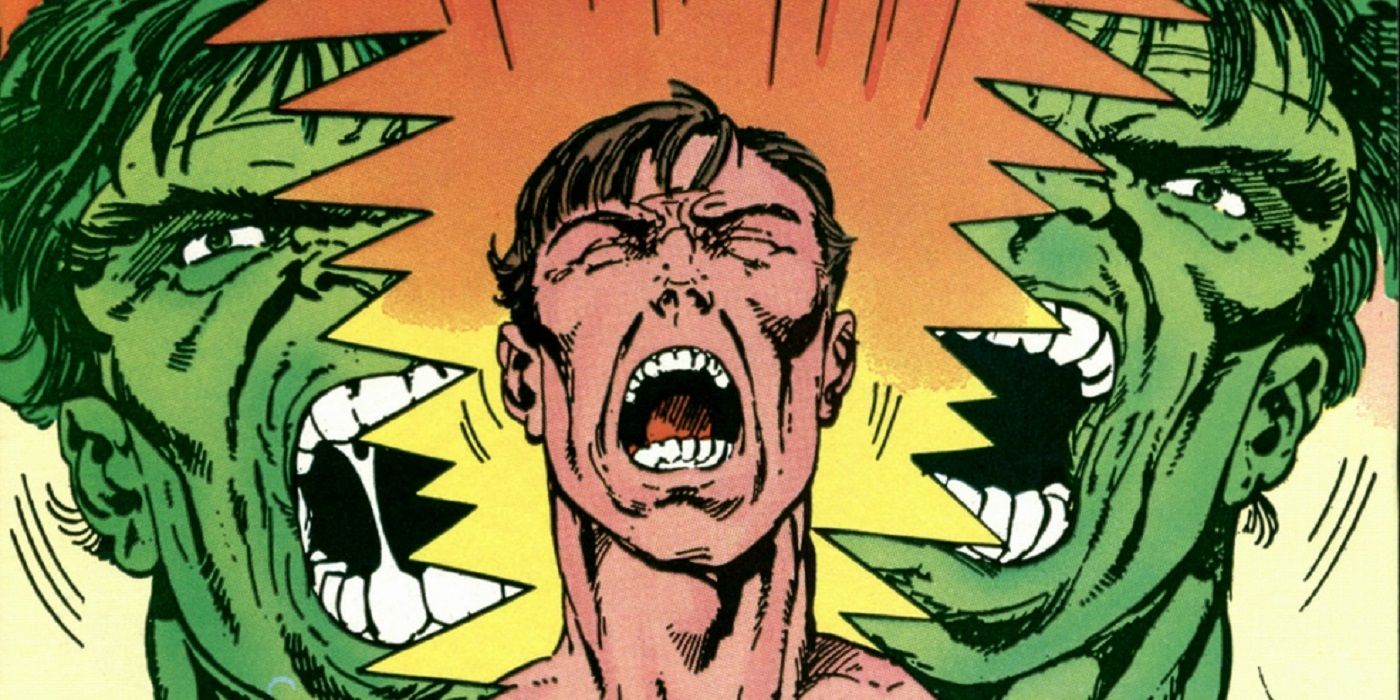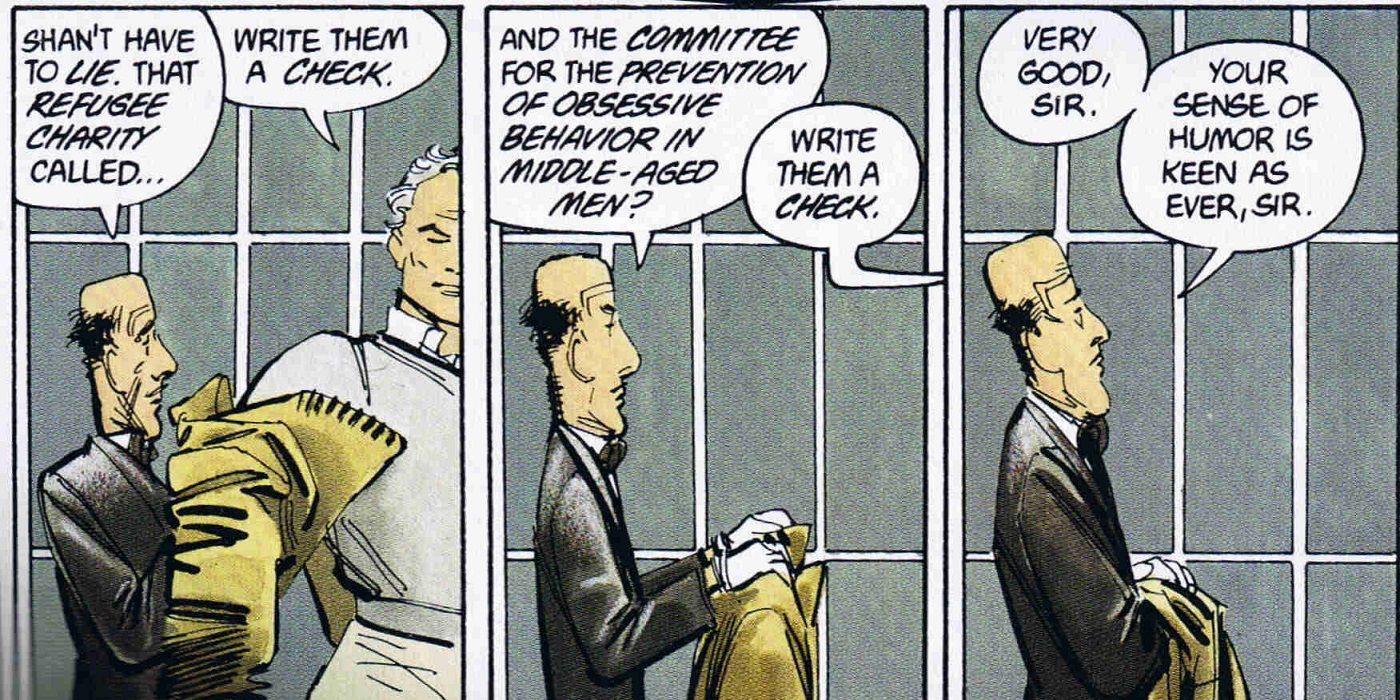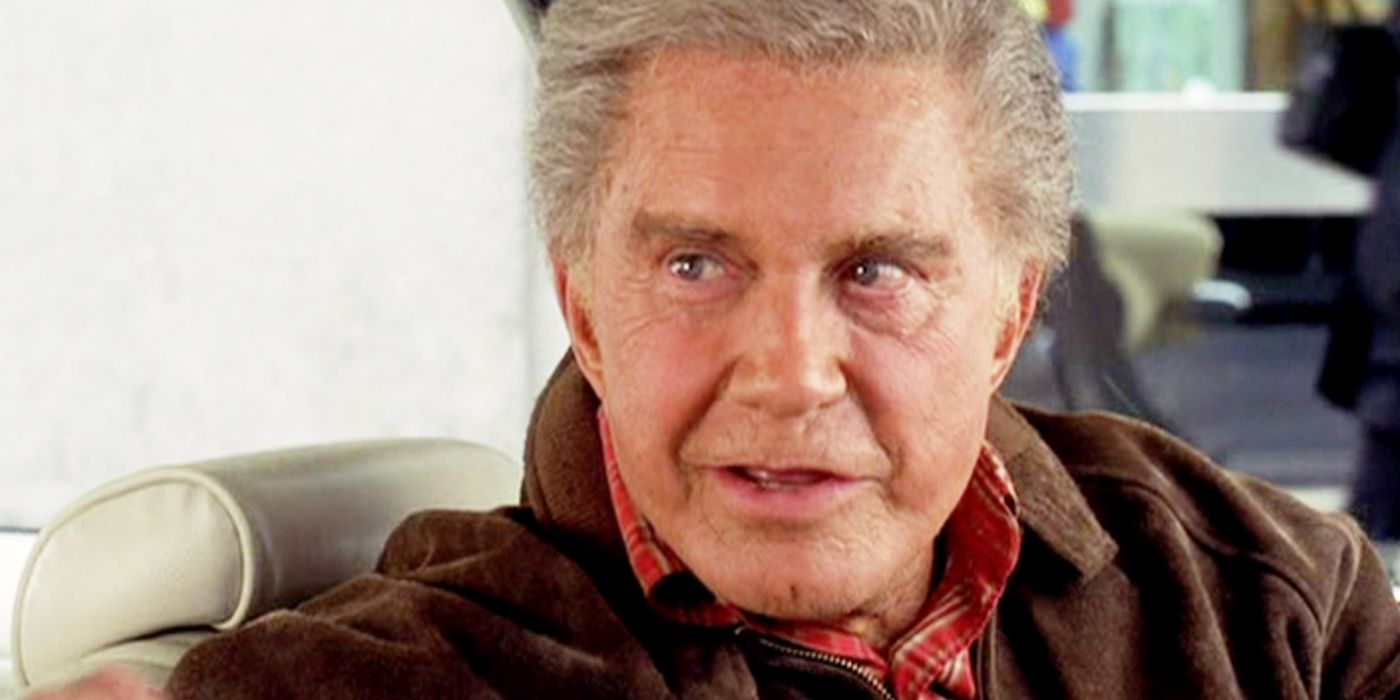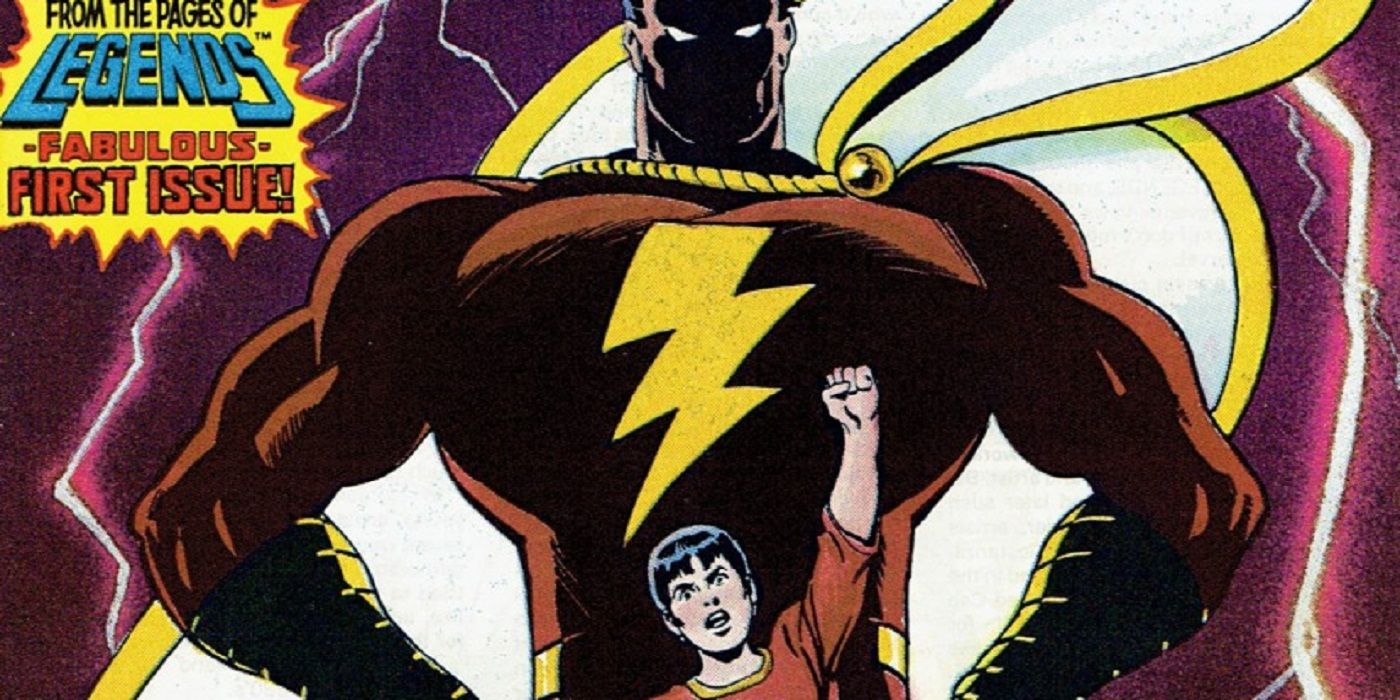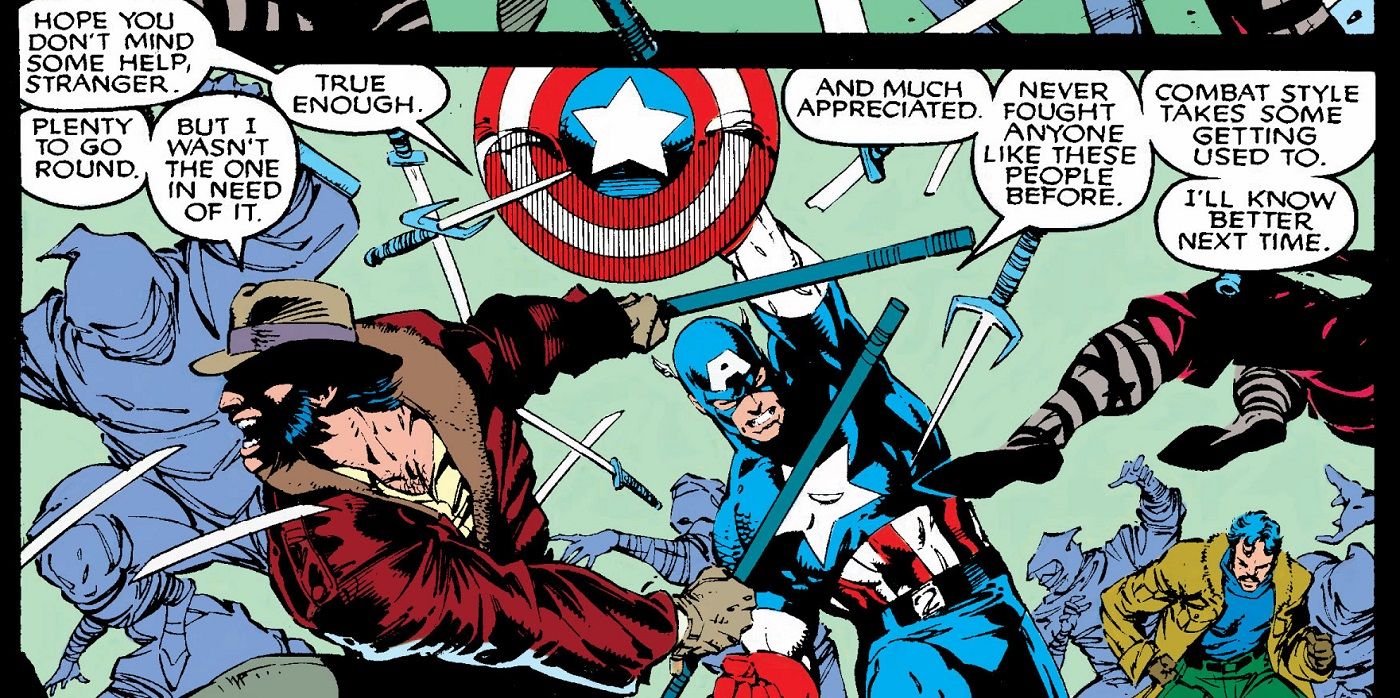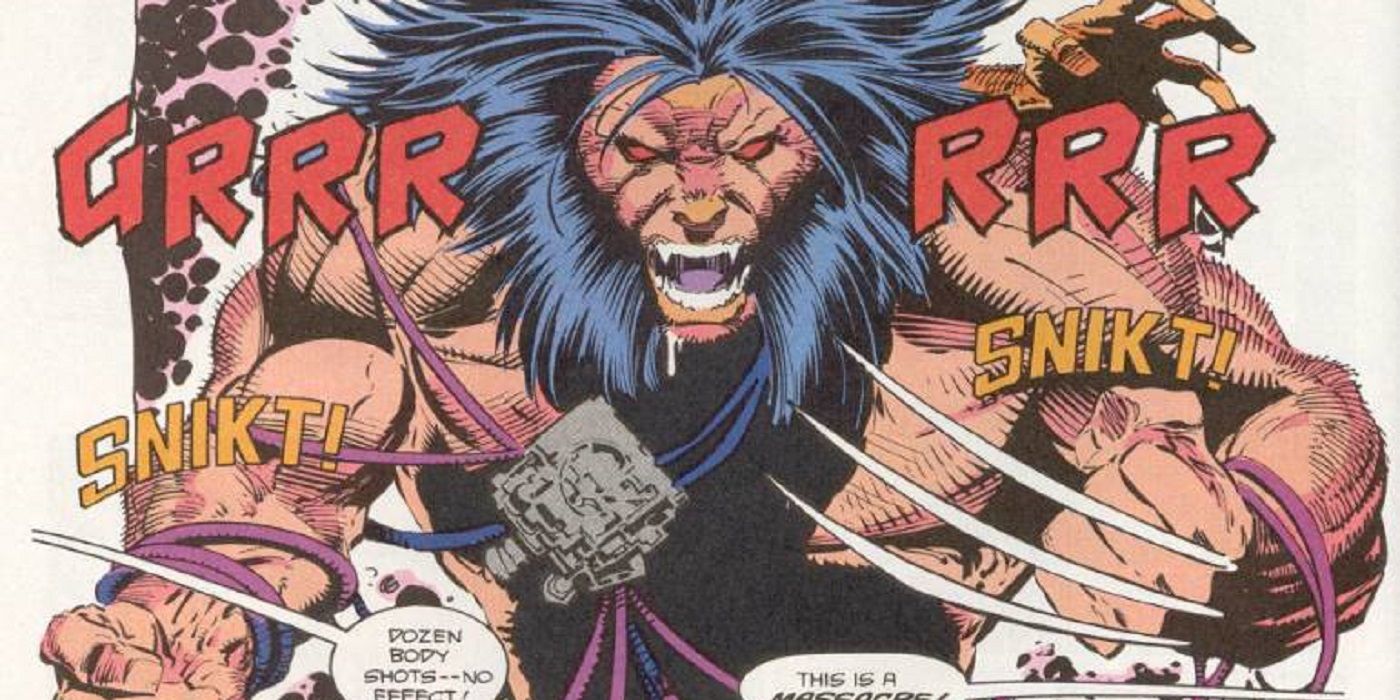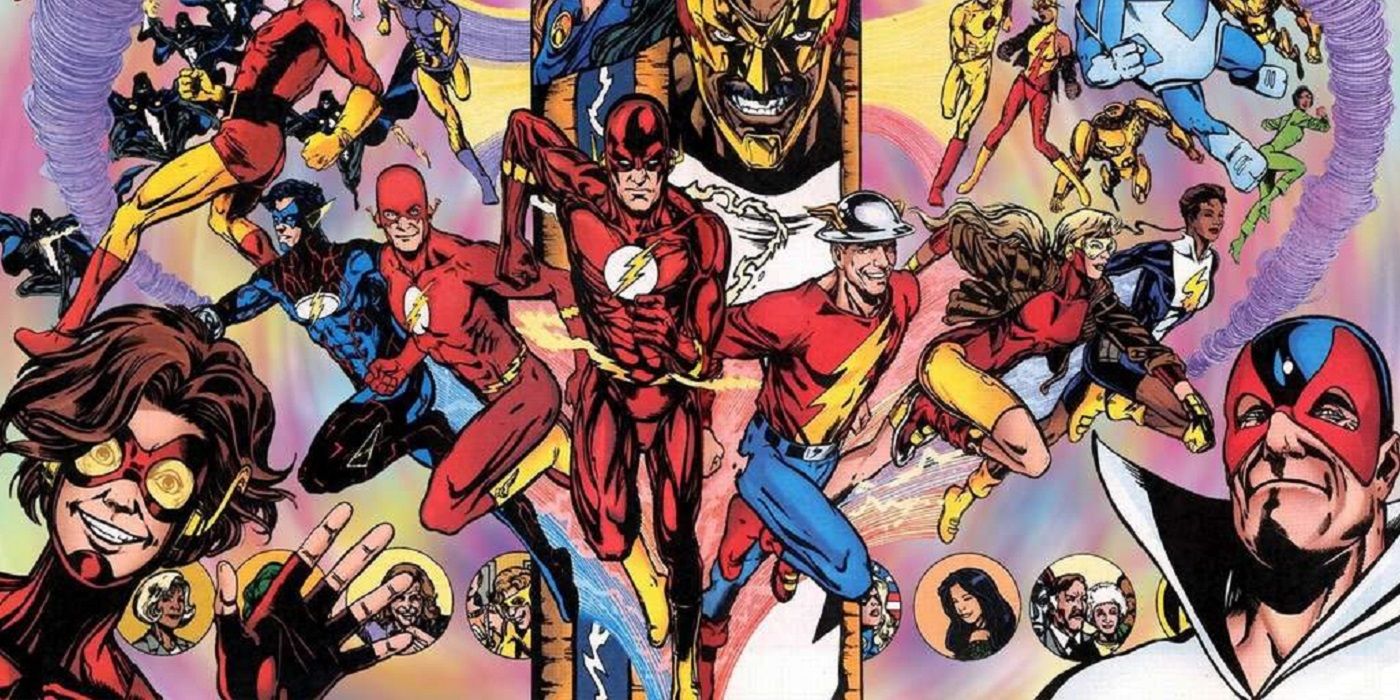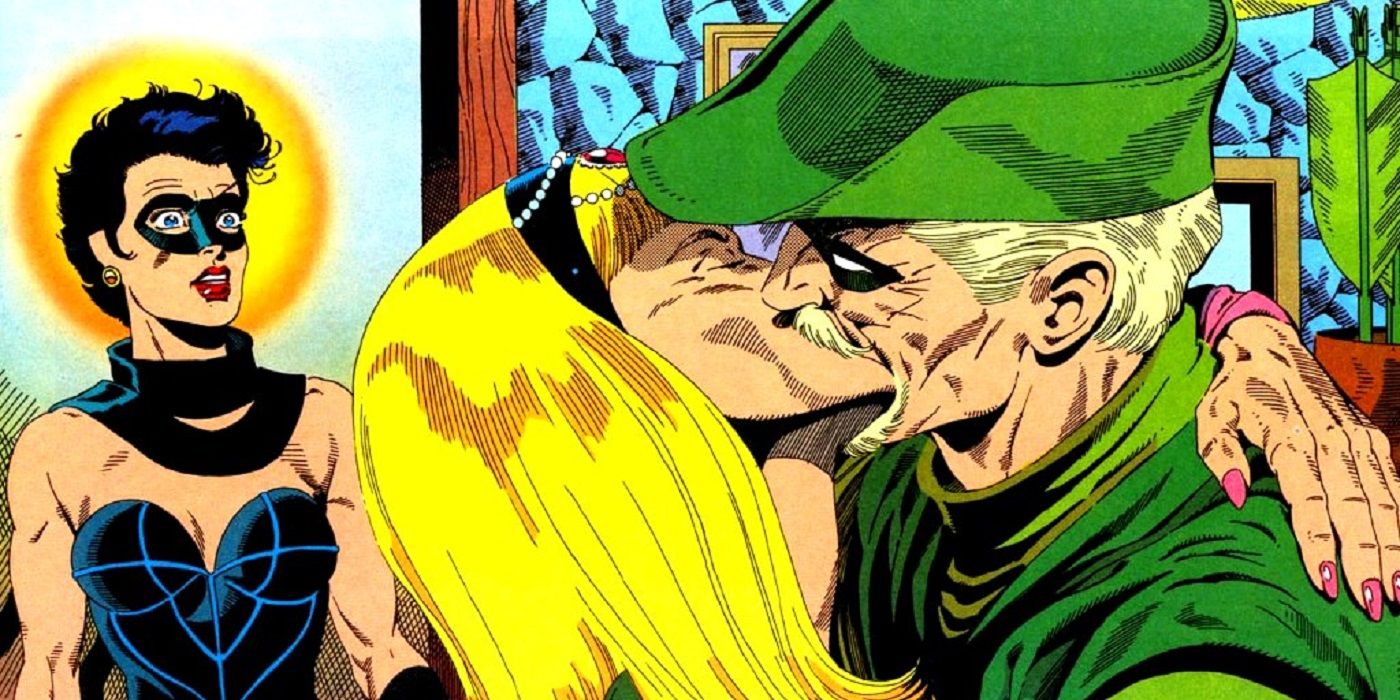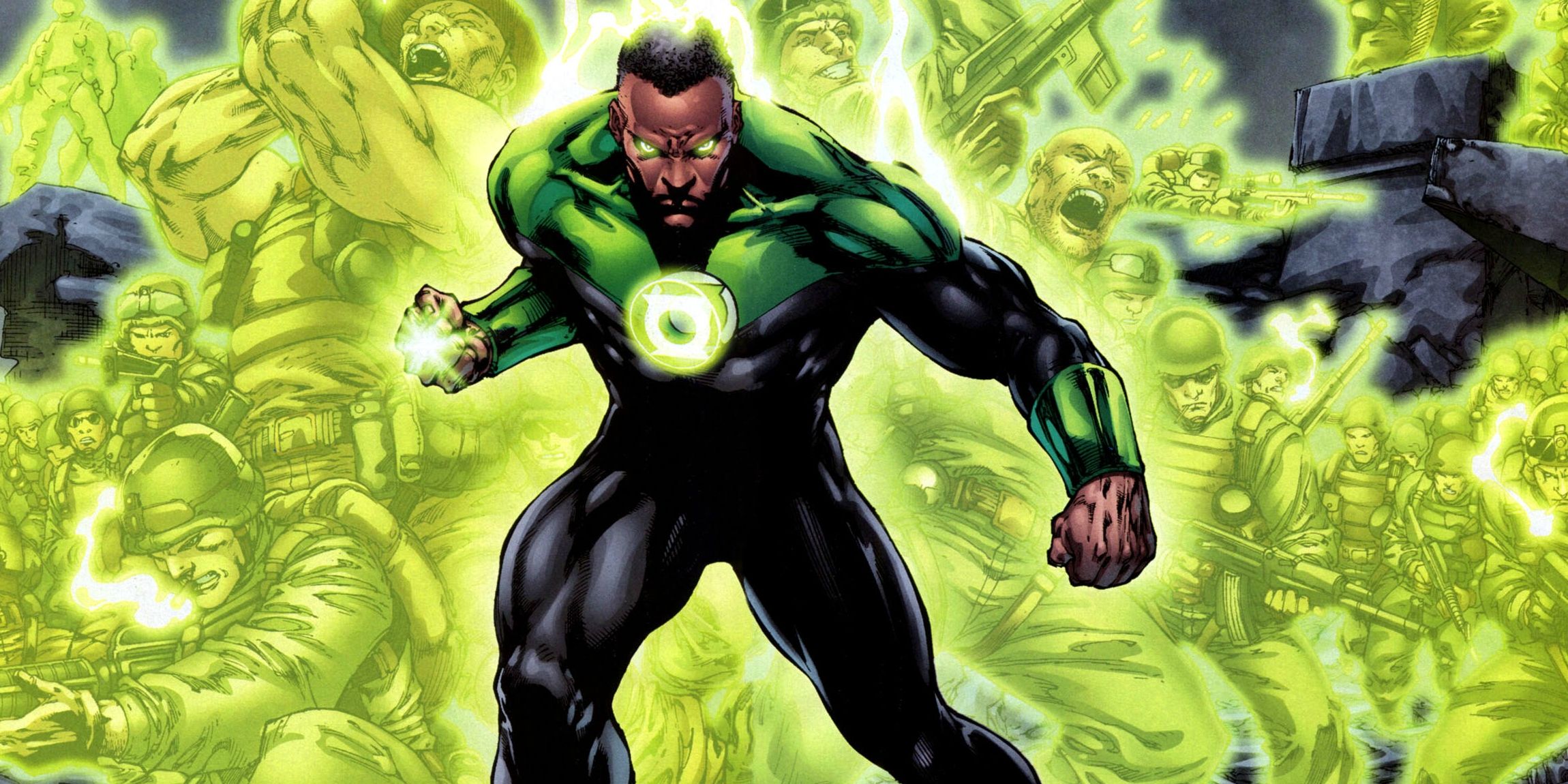One of the interesting aspects of serialized fiction is that the characters are in a fascinating state of flux. They are always changing, but at the same time, they can never change too much from their iconic stature, at least not for too long. Batman, for instance, is not suddenly going to become a Las Vegas lounge singer permanently. That's just not part of what makes Batman Batman.
RELATED: 15 Popular Comic Book Characters That Started As Jokes
However, in the same fashion, the Batman of 1939 is not the same Batman of 2017, and along the way, characters sometimes do change significantly. In this list, we take a chronological look at some iconic character traits that did not exist in the characters in question until at least a decade into their existence (sometimes much longer); things that we take for granted about characters now that were not present until many years had passed. NOTE: We're not counting characters who disappeared for decades and then came back with new personalities.
15 AQUAMAN IS FROM ATLANTIS
Aquaman had a curious existence as a comic book character in his early years. The first time he appeared on the cover of an American comic book was not until he showed up along with his teammates on the first appearance of the Justice League of America in 1959's "Brave and the Bold" #28. However, unlike many other superheroes that debuted in the Golden Age, Aquaman actually maintained an ongoing feature from his debut in 1941 up through the beginning of the Silver Age (and beyond). He just was never given the cover on the anthology series that he shared with Green Arrow and other heroes (most commonly "Adventure Comics," where Superboy was the cover feature).
At the same time, while Aquaman is best known for being the king of Atlantis today, but that was not the case when he debuted in "More Fun Comics" #73. When he debuted, his father had just experimented on him to the point where he could breathe underwater. That was the status quo until 18 years later, in 1959's "Adventure Comics" #250, when Robert Bernstein and Ramona Fradon revealed that Aquaman was from Atlantis (the classic tale of his mother falling in love with a surface dweller and Aquaman being the product of that forbidden union). Soon, Atlantis and its citizens (including Aqualad) became key parts of Aquaman's life and it has been that way ever since.
14 DISAPPEARING BATMAN
This one is a bit tricky. Just in terms of things that specifically never happened for decades, it was not until the early 1970s that Batman ever disappeared on Commissioner Gordon after they were finished talking. It's something that has become a recurring gag in "Batman" comic books ever since (to the point where it was used during "Knightfall" for Gordon to know for sure that Jean-Paul Valley was not the real Batman, because he waited until Gordon gave him the okay to leave). However, the disappearance act is emblematic of a bigger change in the Bat-mythos, which is Batman's relationship with the police force period.
After a few uneasy years earlier on, Batman soon was a trusted colleague of the Gotham City Police Department (the Bat-Signal debuted within three years of Batman's first appearance). For decades, Batman was essentially a deputized member of the Gotham City Police Department and operated openly in Gotham City as a trusted member of the city. Beginning in the early 1970s, however, Batman went to the shadows and no longer operated with the GCPD out in the open. It was all done on rooftops and away from prying eyes (like Batman's famous rooftop meeting with Harvey Dent and Jim Gordon in "Batman: The Long Halloween").
13 THE LASSO OF TRUTH
William Moulton Marston, co-creator of Wonder Woman, was famously part of the development of the modern day lie detector test, as the polygraph machine is partially based on Marston's theories involving systolic blood pressure measurement as it related to lies. So Marston could safely say he invented a lie detector, but he really was not the creator of what we commonly refer to as the lie detector Marston, though, was a prominent advocate for the ploygraph machine. He used the device in a number of popular ads in the first half of the century. Therefore, due to his interest in lie-detecting, people naturally believe that is why Wonder Woman has a lasso that makes people tell the truth.
However, that was not the purpose of Wonder Woman's lasso when Marston first conceived it in the first year of Wonder Woman's comic book adventures. Instead, it just gave Wonder Woman the ability to compel people to do what she wanted them to do. Sometimes that did mean for them to tell her the truth, but it was more about control than actual lies. It was not until the late 1970s "Wonder Woman" TV series that the lasso specifically became the "lasso of truth." The lasso of truth was not adapted into the comics until the Post-"Crisis on Infinite Earths" "Wonder Woman" reboot by George Perez, Greg Potter and Len Wein.
12 MAGNETO: HOLOCAUST SURVIVOR
Perhaps he most famous character that Stan Lee and Jack Kirby created for their 1963 comic book series, "X-Men," was the villain for the mutant heroes, the X-Men, in their first adventure, Magneto, the master of magnetism, was the leader of the Brotherhood of Evil Mutants. Even as he became less of a presence in "X-Men," he fought both the Avengers and the Defenders in the pages of other comic books.
Then Chris Claremont was given control of a newly revived "X-Men" series (sales had gotten so bad on the series that Marvel had converted it into a reprint-only series) starring an all-new, all-different team of X-Men. In 1981's "Uncanny X-Men" #150, Claremont and artist Dave Cockrum revealed that Magneto has much deeper qualities than ever known before, as he was a Holocaust survivor! This information led to Claremont softening the character even further in the graphic novel, "God Loves, Man Kills," where Magneto teams up with the X-Men to rescue a kidnapped Professor X. It was then that the whole "Professor X and Magneto's visions for the mutant race are like Martin Luther King vs. Malcolm X" take began to take hold, which it continues to this day, as Magneto continues to be a prominent member of the X-Books.
11 DAREDEVIL IS A NINJA
Following his debut in 1964, Daredevil had pretty much one notable characteristic, the fact that he was a blind superhero. The title got some mileage out of the love triangle between Matt Murdock, Karen Page and Matt's law partner, Foggy Nelson, but after Karen was written out of the series and Matt took a brief detour to San Francisco with his then girlfriend, Black Widow, the book was quickly losing stream. Marvel considered canceling it or merging it with another low selling title. Then came Frank Miller.
After first becoming the regular artist on the series with inker Klaus Janson, Miller took over writing duties with "Daredevil" #168. He soon introduced the mysterious Stick, who was revealed to be the one who trained the younger Matt Murdock into being a superhero in the first place. Stick was part of a war between two rival clans of ninjas and Matt was soon sucked into that war. Miller was a fan of the manga series "Lone Wolf and Cub" and he soon made "Daredevil" a heavily ninja-inspired comic book series. Daredevil's ninja influence has become a major part of the character, carrying over into his popular Netflix TV series decades later.
10 ETRIGAN'S RHYMES
Jack Kirby had a strange tenure at DC Comics at the beginning of the 1970s. His contract with the company dictated that he produce a certain amount of pages, but DC would have the say over what Kirby would ultimately draw. So DC would make Kirby cancel his earlier series and start a new series whenever DC wanted a new book from Kirby (as he could only do X amount of books per month and they didn't want the books to continue under new artists). One of the earliest new series following Kirby's initial Fourth World titles (and one of the more successful ones) was 1972's "The Demon," a horror book by Kirby starring Jason Blood, who would transform into the demon Etrigan.
After Kirby finished with the series, Blood and Etrigan went into character limbo. They were brought out of limbo in 1984 by Alan Moore during his classic "Swamp Thing" run. When Moore reintroduced Etrigan into the DC Universe, he now had a new trait. He had been promoted to being a rhyming demon. This new distinctive way of speaking was like catnip to other comic book writers, as it allowed them to come up with clever rhymes for the demon. It has become an indelible part of the Demon in all his appearances since, but it took a dozen years before it first showed up.
9 THE HULK'S BIRTH
When the Hulk was introduced in the first issue of his short-lived 1962 series, Stan Lee and Jack Kirby were clearly looking to the classic tale of "Dr. Jekyll and Mr. Hyde" for the inspiration of their new creation, and Bruce Banner and the Hulk were treated as distinct beings for over two decades. It was not until 1985's "Incredible Hulk" #312 (by Bill Mantlo, Mike Mignola and Gerry Taloac, very likely working off of a Barry Windsor-Smith idea) that the idea was introduced that the Hulk was a manifestation of the mental abuse that Bruce Banner suffered as a child at the hands of his abusive father.
Peter David picked up that idea and the notion that this caused multiple personality disorder in Banner's mind and developed it even further by temporarily having the various personalities merge into one cohesive Hulk. As the years have gone by, the fact that the Hulk is a manifestation of Banner's inner demons has become the most accepted version of the character, as highlighted by Mark Ruffalo's portrayal of the character in the "Avengers" films.
8 ALFRED'S ROLE
Four years into Batman's existence, he gained a trusty butler named Alfred, who quickly learned that Masters Bruce Wayne and Dick Grayson were secretly the superheroes Batman and Robin. Alfred was a longstanding member of the "Batman" supporting cast, but it was not until Frank Miller and Klaus Janson's 1986 masterpiece, "The Dark Knight Returns," that Alfred's role in the Batman universe changed dramatically. First off, Miller revealed that Alfred was the Wayne family butler, and thus Bruce's surrogate father following the murder of his parents (an idea first introduced in a 1985 episode of "Super Friends").
More importantly, Miller decided to alter Alfred's personality. He based him upon John Gielgud's Academy Award-winning performance as the butler in the hit 1980s film, "Arthur." Now, Alfred went from being a background character without much influence upon the series to a steady sarcastic source of comic relief and, of course, that surrogate father role for Batman. It was a marvelous change that made Alfred a much more important character in the Bat-mythos, and that take on Alfred has been consistent in the years since.
7 UNCLE BEN'S LAST WORDS
Amazingly, when Spider-Man first explained how he was driven to become a hero by the revelation in his debut in "Amazing Fantasy" #15 (by Stan Lee and Steve Ditko) that a burglar he had let get away earlier in the story had then murdered his beloved Uncle Ben. In dying, his uncle used the now-famous phrase "With Great Power Comes Great Responsibility" -- but it was not attributed to anyone. Everyone remembers it as being an Uncle Ben phrase, but that wasn't the case at first. It was just a general lesson that Spider-Man learned.
As the years went by, Uncle Ben was even beginning to lose his importance in Spider-Man's mythos. By the end of Stan Lee's run on the series, he was beginning to use George Stacy, the late father of Spider-Man's late girlfriend, as Spider-Man's new go-to reference for whenever he needed to check his conscience. In 1987's "Spider-Man vs. Wolverine" #1, though (by Christopher Priest, MD Bright and Al Williamson), Spider-Man finally got around to associating that phrase with Uncle Ben, and that has since solidified Uncle Ben's place in the Spider-mythos. He famously told Peter the phrase in the Sam Raimi "Spider-Man" film.
6 BILLY BATSON IS CAPTAIN MARVEL
One of the most popular superheroes of the 1940s was Captain Marvel, who was Earth's mightiest mortal. Young orphan Billy Batson would shout the magical word "Shazam!" and he would trade places with Captain Marvel, who had the wisdom of Solomon, the strength of Hercules, the stamina of Atlas, the power of Zeus, the courage of Achilles, and the speed of Mercury. Captain Marvel and Billy were distinct people, and there's even a famous Christmas story where they try to find presents for each other. National Comics (now DC Comics) felt that Captain Marvel was too similar to Superman, so they sued Fawcett, which after a long-running lawsuit, decided to stop making comics altogether in the 1950s.
They ultimately agreed to license their characters to DC Comics in the 1970s. The DC take on Captain Marvel was the same as it was before, as Captain Marvel existed on his own distinct Earth from the rest of the DC Universe. Thus, his personality was old fashioned compared to the rest of the DC Universe. However, once "Crisis on Infinite Earths" eliminated DC's multiple Earths, Roy Thomas introduced Captain Marvel into the Post-Crisis DC Universe in "Shazam: The New Beginning" #1 (with artist Tom Mandrake). Thomas' way of maintaining the original Captain Marvel persona was to reveal that now Billy Batson became Captain Marvel, so that is why Captain Marvel is so innocent in demeanor; he has the mind of a pre-teen!
5 WOLVERINE IS SUPER OLD
Wolverine is perhaps the perfect example of a comic book character whose traits were doled out slowly over the years. He became so mysterious that for quite a while, the driving force of Wolverine's popularity was greatly driven by his mystery. There would be little hints here and there about his past, but never really confirmed, as "X-Men" writer Chris Claremont was famous for his ability to string along a sub-plot for years to keep readers guessing (an approach later "X-Men" writers would try to follow to varying degrees of success).
One of the aspects of Wolverine's character that we now take for granted is that Wolverine was born in the 19th Century; however, up until 1990's "Uncanny X-Men" #268 (by Chris Claremont, Jim Lee and Scott Williams), there were only hints that Wolverine was older than he looked. It was in that World War II story where Wolverine teamed up with Captain America that Wolverine was firmly established as having looked the same age since at least World War II. Other writers quickly jumped on board with their own "Wolverine in the past" stories and it became a major part of his characterization, perhaps culminating in "Wolverine: Origin," where we finally saw Wolverine's full origins as a boy in the 19th Century.
4 WOLVERINE'S MYSTERY PAST
Even after we finally learned that Wolverine was much older than he looked (something that comic creators debated revealing for years before they finally did), it was still a new revelation that Wolverine himself did not remember all of his past. It was not until after Barry Windsor-Smith's classic "Marvel Comics Presents" storyline, "Weapon X," where we learned how Wolverine got his claws, that we discovered that Wolverine did not remember the experience himself.
In a storyline by Larry Hama, Marc Silvestri and Dan Green in "Wolverine" #48-50, we first learned that Wolverine had memory implants. Up until this point, Wolverine had no problems remembering things from his past (besides a few hints about memory gaps in an "Alpha Flight" appearance a few years earlier). In the early issues of "Wolverine," Logan remembers things that happened when he was younger with no difficulty. Post-"Weapon X," however, it was decided that Wolverine's past was now a big mystery. This was a driving force of Wolverine in the "X-Men" films, yet it was revealed less than a decade after the first "X-Men" movie!
3 THE SPEED FORCE
While he had been writing the series for a while, Mark Waid's "Flash" run took a big leap in popularity during his classic "The Return of Barry Allen" storyline, when Barry Allen seemingly came back to life and Wally West had to deal with the return of his mentor, who was suddenly acting not so heroically. During that story, Wally teamed up with other speedsters, including the mysterious Max Mercury, who had theories about the "Speed Force," which gave all speedsters their abilities. The theory was that the various speedsters just tapped into the Speed Force in different ways. Johnny Quick had a formula that channeled into the Speed Force, while Barry Allen and Wally West tapped into it when they were hit by lightning and chemicals.
The grand unifying Speed Force worked to explain how Barry and Wally survived nearly identical freak accidents, as the Speed Force carried with it a sense of destiny. The Speed Force must also be a great place to be, as Wally West merged into it constantly during Mark Waid's run on the series, but he always came out of it in the end. The Speed Force is now a major part of the "Flash" TV series, but it did not show up until more than 50 years of Flash stories had been told.
2 GREEN ARROW: WOMANIZER
One of the strangest things when it comes to characterizations is how writers can pretty much just make up personality stuff for characters out of nowhere, and if people dig the new personality, that can become the default. This is strange because fans also tend to complain whenever characters act "out of character," and yet they're totally fine with Magneto going from pretty much a mutant Nazi to being a sympathetic anti-hero Holocaust survivor. Similarly, Green Arrow nowadays is almost defined by his womanizing, but it was not a character trait that he had for the first 50 plus years of his existence.
When Green Arrow began to date Black Canary, there was no love triangle (well, there was a brief one on Black Canary's side of things, but not on Ollie's) or flirtations with other women. That was always Hal Jordan's deal (and even there, it was not like Hal was dating tons of women). He was a dedicated boyfriend to Black Canary. During Mike Grell's "Green Arrow," Oliver was raped by Shado and later, he was kissed by a young woman at a party (which Black Canary saw, leading to her leaving Oliver). That was it for Oliver's "womanizing" at the time. However, later writers picked up on that idea and since then, Oliver has cheated on Black Canary; his womanizing becoming a central part of his characterization.
1 JOHN STEWART: MARINE
Another character who had a new personality added on has been Green Lantern John Stewart. Introduced in the early 1970s as Hal Jordan's new alternate, John Stewart did not get a whole lot of character work in his early years, with the thing people knew the most about him was that he was an architect. Later, during "Cosmic Odyssey," John was strangely very arrogant and over-confident, which led to the destruction of a planet. That then became the "Cliffs Notes" version of John Stewart -- he was the guy who was guilty over getting a planet destroyed.
Ultimately, writer Geoff Johns helped John Stewart get past that, as Johns doubled down on the whole "architect" aspect of John's character. However, over in the DC Animated Universe, the "Justice League" cartoon had John Stewart be a marine, and therefore become very militaristic on the series. Johns brought that over into the comic book, giving John a new Marine background. Over time, his Marine background became the defining characteristic that John was known for, much like how it used to be "guilt over the destruction of a planet."
Can you think of another notable character trait that was only introduced a decade or more into a character's history? Let us know in the comments section!

